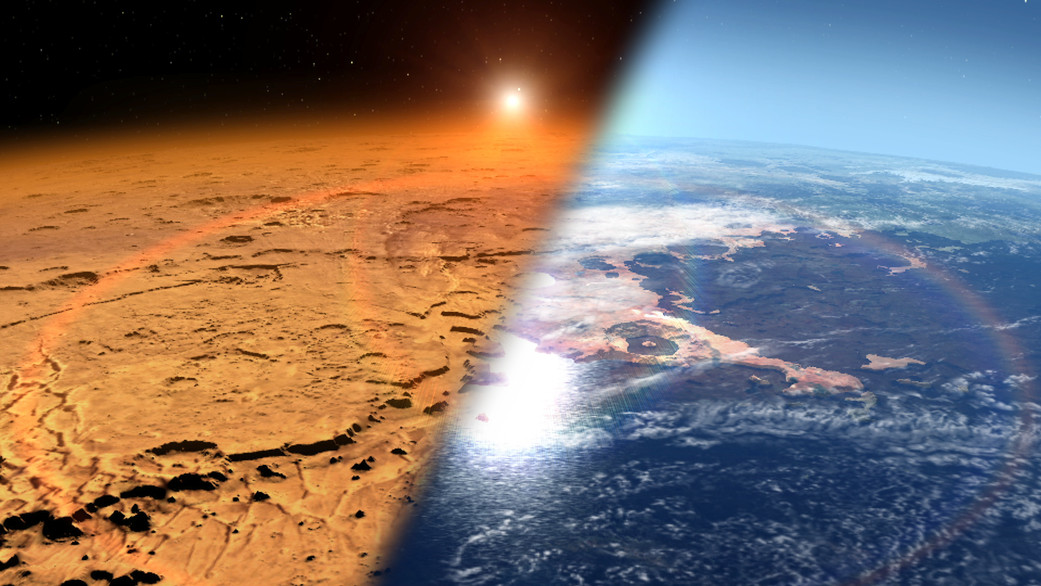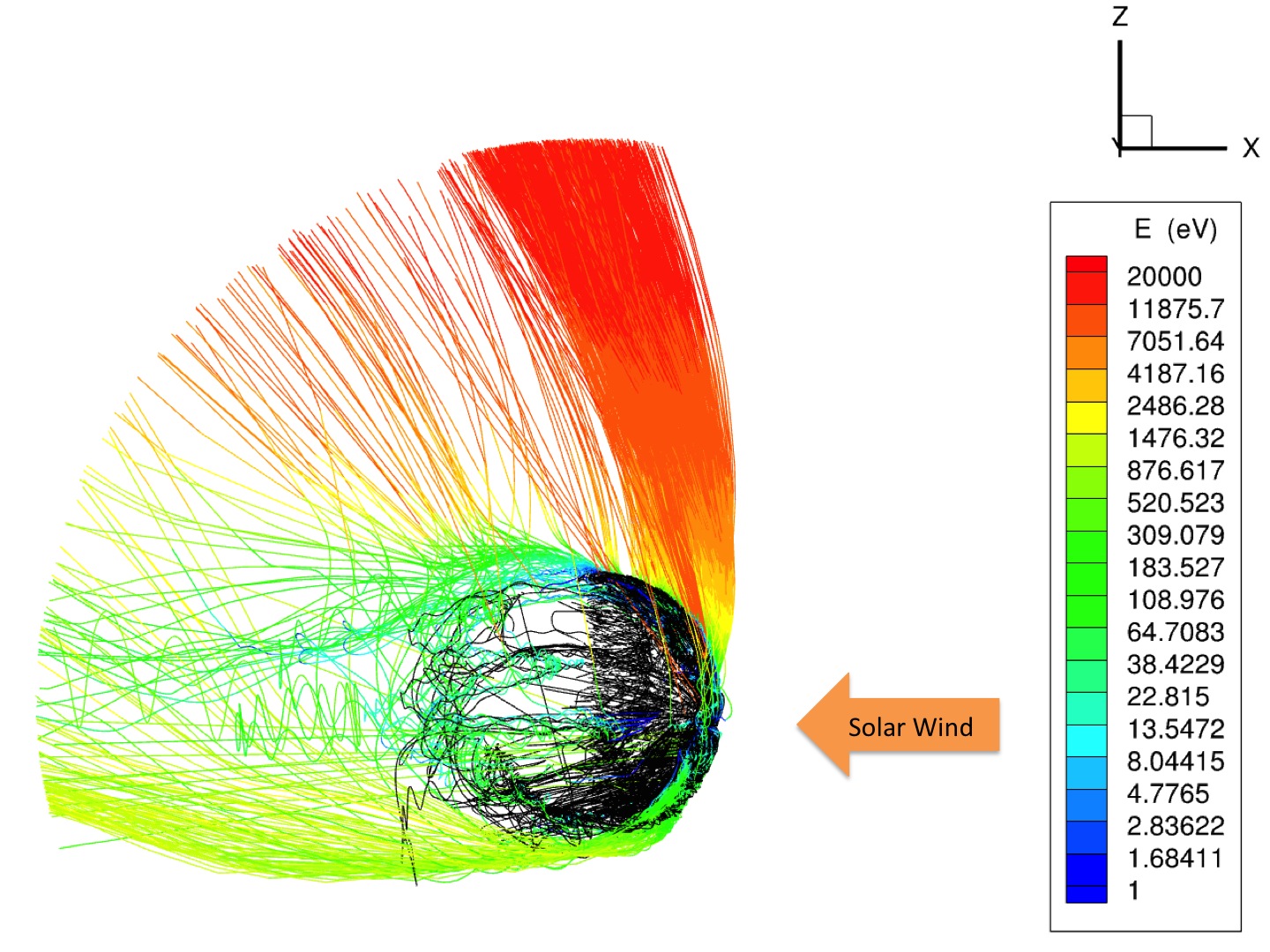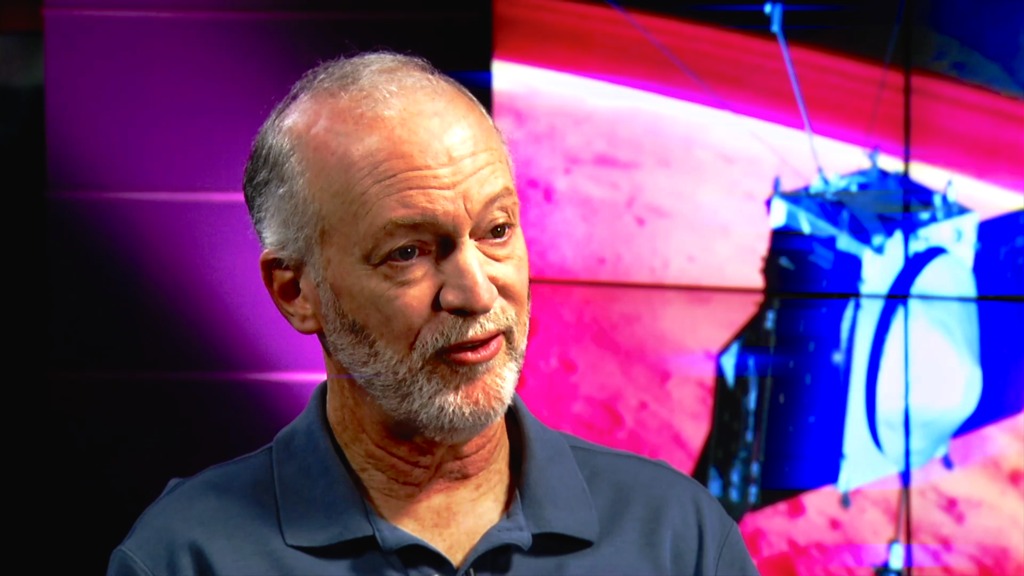What happened to Mars’ atmosphere?

Now we know the answer: It’s blowing in the (solar) winds
Published 6 November 2015
Mars’ atmosphere is blowing in the Solar wind, and the stronger the wind is, the more dramatic the loss.
This is the key finding of NASA’s MAVEN mission to Mars, announced on November 5 by the space agency.
The red planet, today an arid desert with a very thin atmosphere, was likely more similar to its bigger cousin Earth in the distant past. It would have had a thicker atmosphere and running water on the surface, conditions that in principle would have allowed life to develop and thrive.
Yet about four billion years ago (half a billion years after the formation of the Solar System), something drove a transition to today’s conditions, where only a trickle of liquid water flows on the dry remnants of oceans and riverbeds.
During the first year of mission operations, the orbiting MAVEN (Mars Atmosphere and Volatile Evolution) spacecraft has been able to quantify the rate and geometry of the loss of charged particles in the atmosphere, which has been induced by Solar wind.
The most important conclusion after initial data analysis shows the process is highly sensitive to the wind’s velocity. Doubling the wind speed, which has been observed during a violent episode of Solar activity called Coronal Mass Ejection, leads to a more than tenfold increase in the atmospheric loss rate. This had been previously reported in 2008 by an earlier mission (the Mars Express), and now confirmed by the new more detailed data from MAVEN.

But all planets bleed gas into space, and not just the charged particles measured by MAVEN, but neutral atoms and molecules as well. Thus a key question is why Mars is so different to its closest counterparts, Venus and Earth, which retained a thick atmosphere.
Comparing Mars to Earth, one could naively conclude that its strong magnetic field not only shields life forms on Earth from the Solar wind’s ionizing radiation, but is also preventing its erosion of our atmosphere.
However, as often happens with science, the situation is not that simple. Venus today has a magnetic field much weaker than Earth, yet its atmosphere is much thicker, unlike Mars.

Two different aspects can contribute to understanding what happened to Mars. First, atmospheric gases can be replenished through release of volatile elements from the planet’s surface. Thus, a complex and dynamic modelling of both production and loss of gas is needed to characterise the evolutionary history of the planet’s atmosphere.
Second, and possibly more directly relevant to the MAVEN findings, is that early in the history of the Solar System both the magnetic fields around planets, and the wind speed, were different.
Young stars are more energetic in blowing faster winds, dramatically increasing the rate at which atmospheres around the young planets may be stripped. But the planets themselves are likely to have stronger magnetic fields to protect them, because a larger portion of their interior is hot and molten.

Over time planets cool down and size matters. Mars, ten times smaller than Earth, lost its magnetic field within a few hundred million years after formation, while Venus kept it for about a billion years, and Earth retained it.
Possibly Venus was just big enough to be shielded by its magnetic shield during the early period of increased solar wind activity, preserving an atmosphere that then became thicker over time because of runaway release of carbon dioxide from its surface.
The MAVEN findings also pose fascinating new questions: How likely is a planet to retain liquid water on its surface sufficiently long enough for the development of complex life? And if no liquid water is present on the surface, can life thrive shielded in the sub-surface?
In addition to MAVEN, other space missions are contributing to answering these fundamental questions, including the Mars rovers, and future missions to the outer Solar System. The University of Melbourne itself is launching Australia into the space frontier. So stay tuned for more news.
Banner Image: An artist’s impression of a Solar storm hitting Mars and stripping ions from the planet’s upper atmosphere. Picture: Nasa

